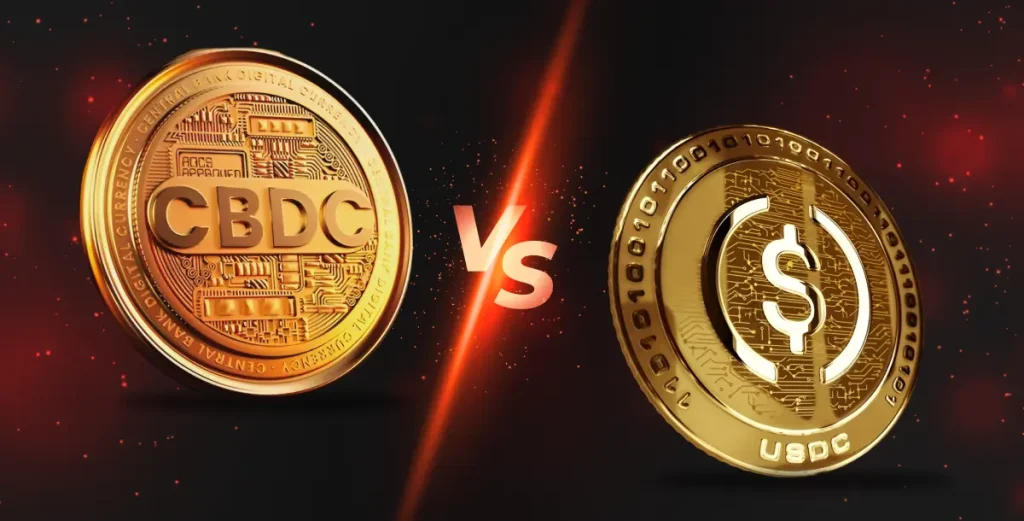Stablecoins once lived almost exclusively in the world of crypto trading, serving as a reliable bridge between volatile digital assets and traditional fiat currencies. But their role is expanding. Today, these digital dollars are moving into the mainstream, poised to reshape e-commerce and global commerce. For businesses, this transition represents a significant opportunity—but only if the right foundation is in place.
The shift from speculative trading to everyday transactions hinges on infrastructure. For stablecoin payments to rival credit cards, they must integrate seamlessly with banking, offering stability, trust, and scalability. Stablecoins can modernize payments by enabling faster cross-border transactions, reducing fees, and improving financial inclusion. This demands new payment rails that connect merchants, consumers, and financial institutions, transforming both payments and banking.
This guide will explore the infrastructure needed to power the next wave of digital commerce, breaking down what it takes to make stablecoin payments a practical reality for businesses everywhere.
The Rise of Stablecoin Payments in Commerce
The journey of stablecoins from niche trading tools to viable payment solutions has been rapid. Initially designed to give crypto traders a haven from market volatility, their inherent benefits quickly caught the attention of the broader financial world.
So, why are businesses and payment processors increasingly interested in stablecoins?
- Speed and Cost Efficiency: Traditional cross-border payments can take days to settle and come with high fees. Stablecoin transactions can be settled in minutes, often for a fraction of the cost.
- Global Reach: Stablecoins operate on borderless blockchain networks, allowing merchants to accept payments from anyone, anywhere, without worrying about currency conversions or international banking hurdles.
- Settlement Finality: Unlike credit card payments, which can be reversed through chargebacks, blockchain transactions are generally final. This provides merchants with greater certainty over their revenue.
This growing appeal is why major players are taking notice. For example, the Worldpay stablecoin pilot signaled a major step toward mainstream adoption, demonstrating how established payment giants are exploring digital assets.
In 2025, several notable stablecoin launches further underscored this trend. Visa announced a stablecoin prefunding pilot through Visa Direct at SIBOS 2025, aimed at enabling faster business transactions. Tether unveiled USAT, a U.S.-based stablecoin designed to strengthen its presence in the U.S. market. Additionally, nine major European banks, including ING and UniCredit, have collaborated to explore or issue a new stablecoin, showcasing the growing interest from traditional financial institutions..
The Infrastructure Layer: What It Takes to Support Stablecoin Payments
Making stablecoin payments work for e-commerce requires more than just a blockchain. It needs a sophisticated technology stack that connects digital assets to the traditional financial world in a secure and compliant way.
Core Infrastructure Needs
Several components are essential for building a robust system for stablecoin payments:
- Secure Custody and Settlement: Businesses need a safe place to hold their digital assets. Infrastructure for stablecoin payments must include enterprise-grade custody solutions, like multi-party computation (MPC) wallets, which protect funds from theft and unauthorized access. The settlement layer ensures that transactions are cleared and finalized reliably.
- APIs and Payment Gateways: For merchants to accept stablecoins, they need easy-to-integrate tools. Payment gateways and APIs act as the bridge, allowing e-commerce platforms to connect to blockchain networks without needing to build complex systems from scratch.
- Compliance and KYC/AML Integration: To operate legally, payment providers must adhere to Know Your Customer (KYC) and Anti-Money Laundering (AML) regulations. The best infrastructure for stablecoin payments integrates these compliance checks directly into the transaction flow, ensuring every payment is screened.
Beyond Blockchain Basics
While the blockchain itself is the foundation, the real magic happens in the middleware. This is the technology layer that connects everything—banks, merchants, wallets, and compliance tools. It translates complex blockchain operations into simple actions, like a customer clicking “pay.”
High quality payment platforms exemplify the next generation of payment infrastructure, offering secure, robust, and compliant solutions tailored for businesses in the digital asset space. Their comprehensive approach supports seamless digital asset management and payment flows, enabling businesses to confidently handle transactions with the same reliability as traditional currencies. By leveraging Wallet-as-a-Service and modular blockchain infrastructure, companies can accelerate growth while ensuring top-tier security and compliance.
Real-World Applications of Stablecoin Payments
The applications of a robust stablecoin infrastructure extend far beyond a simple checkout button.
- E-commerce: Merchants benefit from faster checkout experiences, significantly lower transaction fees compared to credit cards, and the ability to tap into a global customer base without friction.
- Treasury Management: By bypassing traditional payment rails, such as ACH, wire transfers, and credit card networks, businesses can achieve real-time, 24/7 settlement and greater capital efficiency. This moves fiat transactions away from centralized systems tied to bank hours and multi-day settlement cycles.
- Institutional Use Cases: At a larger scale, stablecoins are impacting government, bank, and citizen settlements. Governments can use them for instant, transparent distribution of subsidies or tax refunds. Banks benefit from real-time interbank settlements, bypassing traditional clearinghouses. For citizens, stablecoins provide secure, accessible payment options, especially in underbanked regions, promoting financial inclusion.
Building the Best Infrastructure for Stablecoin Payments
So, what separates effective infrastructure from the rest? Three qualities stand out: reliability, security, and interoperability. The system must work flawlessly, protect funds at all costs, and connect seamlessly with other networks and platforms.
Innovations in treasury management and secure payment rails are pushing the space forward. As these technologies mature, we can expect tokenized payments to become as commonplace as credit cards are today. A McKinsey analysis on tokenized cash highlights this trend, predicting a future where digital money is deeply integrated into our financial system.
What This Means for Businesses and Investors
For businesses and investors, the rise of stablecoin payments presents a clear opportunity. Early adopters in e-commerce and payments stand to gain a significant competitive advantage by offering faster, cheaper, and more global transaction options.
The choice of infrastructure is critical. Scalable and secure platforms are essential for businesses looking to expand their digital payment operations effectively. Solutions that offer features like blockchain-based security infrastructure, digital asset custody, and white-label payment platforms enable secure and transparent transaction management. These tools help businesses streamline operations and adapt to the rapidly evolving digital payment landscape.
Your Next Move in Digital Commerce
Stablecoin payments are no longer a niche concept confined to crypto trading. They are rapidly moving into global commerce, and the right infrastructure is what will make them a practical and scalable reality. For businesses looking to stay ahead, the time to prepare is now.
If you’re exploring stablecoin payment solutions, a crucial first step is to engage with trusted infrastructure providers. This means leveraging a comprehensive suite of tools, from secure MPC enterprise-grade custody to modular digital asset management solutions. Learn how these solutions can integrate seamlessly into your existing workflows to manage digital assets with the same reliability as traditional currency.
Stop waiting for the financial evolution. The time to claim your commerce infrastructure is now.




